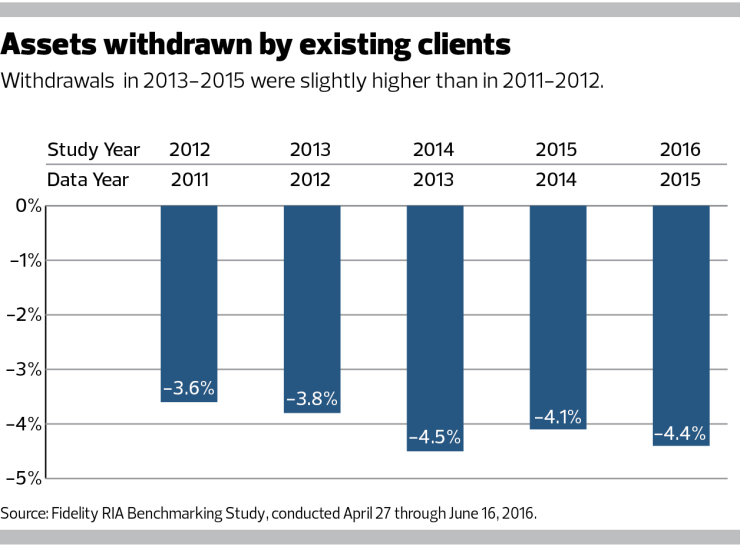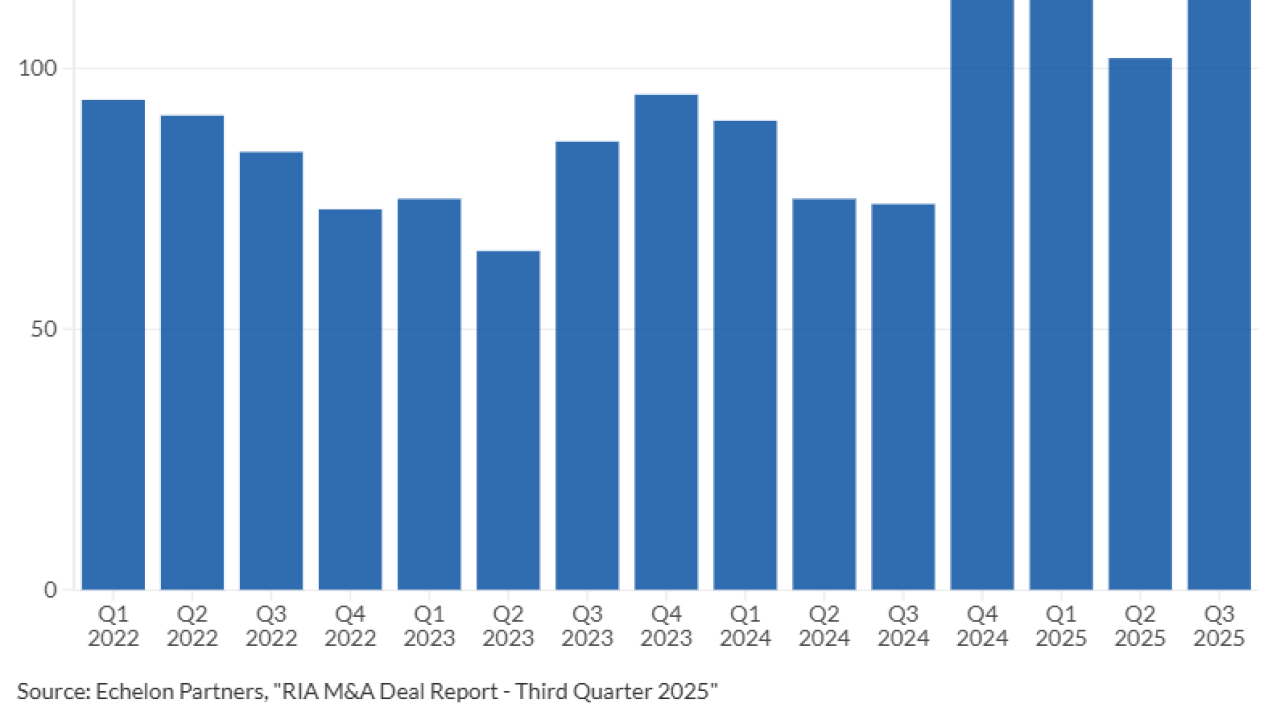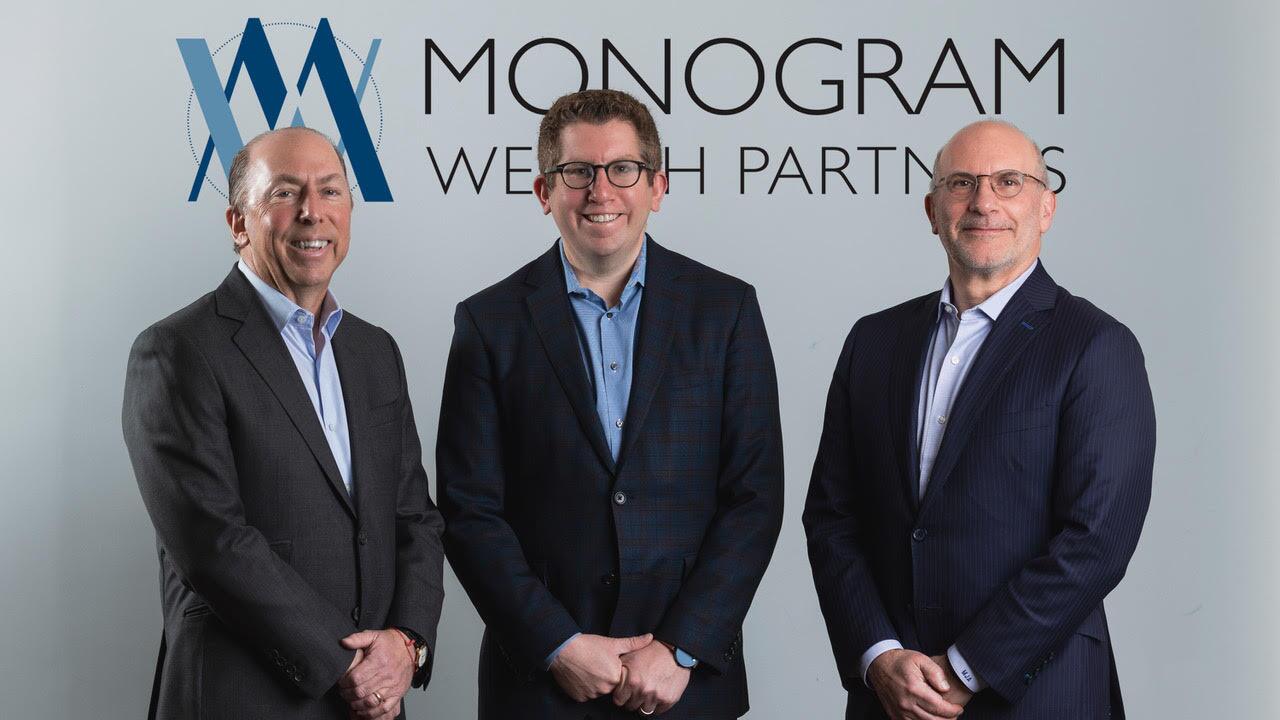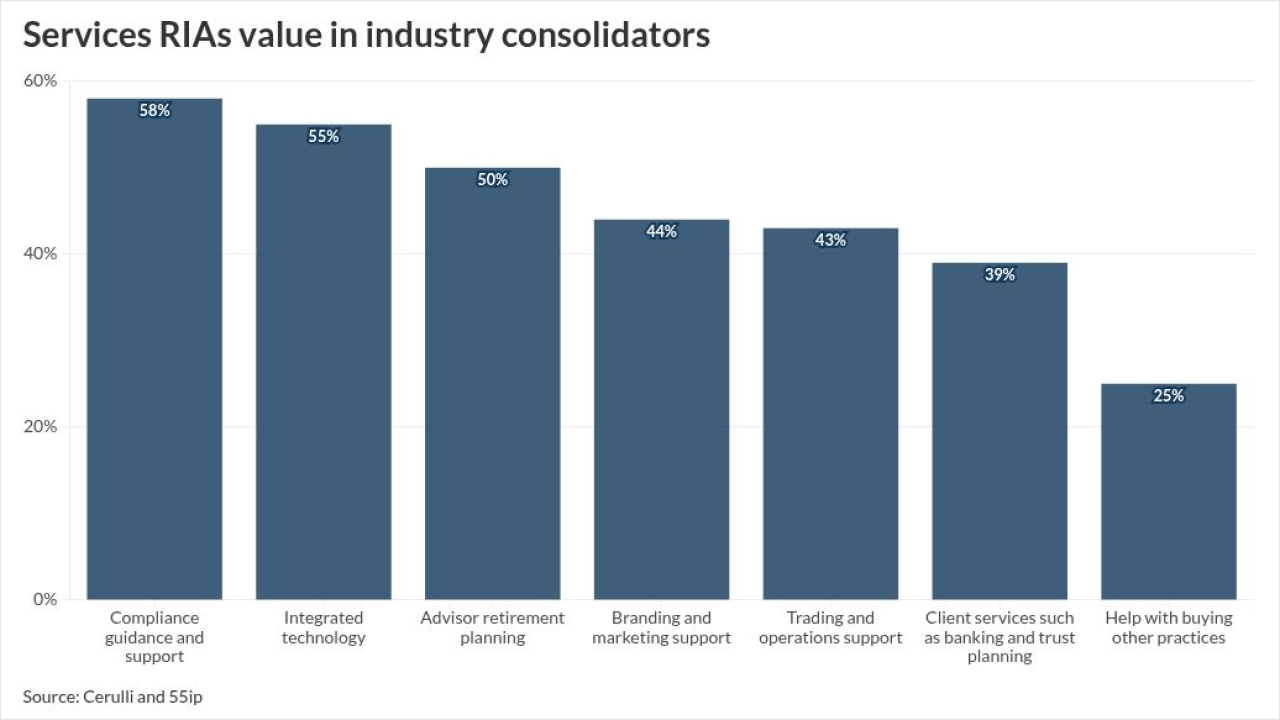More than a third of the nation’s largest RIAs lost assets under management in the past year, including many of the largest firms, according to Financial Planning’s 6th annual RIA Leaders ranking.
For some advisers, there’s been stark evidence of the factors driving the trend. “I’ve attended more funerals in the past year than I ever have” is a new refrain that Gabriel Garcia, a managing director at Pershing Advisor Solutions, says he hears from advisers about their clients.
The AUM shift surprised many in the field who have long forecast near-unlimited growth for independent advisers, especially for the big players. The RIA business model continues to be in the vanguard of the fiduciary evolution, which prioritizes advice over sales, and continues to draw advisers and assets from the sales-driven brokerage world. However, that business model is heavily dependent on the boomer population, which grew along with the sector.
Financial Planning’s 6th annual RIA Leaders ranking revealed a startling trend.
Some 76 million baby boomers were born from 1946 to 1964, with the peak number of births coming in 1949. The Social Security Administration estimates that, on average, 10,000 boomers reach retirement age each day, or about 3.7 million each year.
"I've attended more funerals in the past year than I ever have." – is a refrain Gabe Garcia, head of relationship management at Pershing Advisor Solutions, says he hears advisers say frequently.
The independent RIA space emerged several decades ago as an alternative to the financial giants, and the segment rode the boomer wave to increasing prominence.
That generation now holds about $30 trillion in assets that are expected to be in play until roughly 2030.
‘STUNNING’
The longtime No. 1 firm, Oxford Financial Group in Carmel, Indiana, saw its AUM fall to $13.6 billion from $13.8 billion after adding between $800 million and $1.6 billion each year for the past three years.
The No. 13 firm, Savant Capital Management, in Rockford, Illinois, dropped to $4.2 billion from $4.4 billion. And the No. 19 firm, Evanson Asset Management, in Carmel, California, declined to $3.4 billion from $3.5 billion.
Who made the cut?
When Brad Bueermann, CEO of FP Transitions, heard about the trend of widespread asset declines at a recent industry conference, he said to himself, “That cannot be right.”

His firm, based in Lake Oswego, Oregon, helps RIAs sell or transition their businesses to new owners.
“Stunning” is the word that Michael Zeuner, managing partner of No. 8 WE Family Offices in Miami, used to describe his competitors’ AUM dips. His own firm’s assets jumped by about $1 billion, the kind of increase that’s been more typical of the largest RIAs in recent years.
While Bueermann and Zeuner did not pin industry AUM declines on decumulation entirely, they didn’t rule it out.
At a minimum, it does appear that “the old guard is being buffeted by some competitive headwinds,” Bueermann says.
STATISTICS SHOW DECLINE
In all, 11 of the top 25 firms on this year’s ranking shed assets. By comparison, just one firm in the top 25 did last year.
-
-
Over the years, Financial Planning has been striving to make the annual RIA Leaders list ever more rigorous, weeding out advisory firms that take commission, have registered reps, are owned by big stakeholders. This years ranking calls out the most successful independent, fee-only players who have been able to say no to the big offers -- at least so far.
December 4 -
The RIA sector is in growth mode -- but which firms are growing fastest? See this year's list.
January 6
This year, 44 of the returning 116 firms reported drops, while only six firms on last year’s list had dips. The great majority of those firms reported increases in assets, typically in the $50 million to $300 million range.
Financial Planning’s RIA Leaders ranking, based on assets under management at the end of 2016, is unique in seeking to capture firms that abide by the strictest definition of fiduciary client service, absent commission sales and conflicts of interests from outside ownership (see Methodology).

The results of this year’s ranking were produced in partnership with Discovery Data. Separately, research from two custodians — Pershing Advisor Solutions and Fidelity — suggests that decumulation is indeed factoring into AUM declines at the country’s top RIAs.
From 2011 through 2015, existing RIA clients were contributing an annual average of about 5% net positive assets to their RIAs, says Garcia, the head of relationship management at Pershing Advisor Solutions, citing numbers from the custodian’s annual study of the field.
“But in 2016, we saw that drop to 2.8% — pretty significant,” Garcia says.
“This is the biggest fluctuation in organic growth rates that we have seen in the last five years," says Bob Oros of Fidelity Clearing & Custody Solutions.
“These firms might be suffering from the demographic shift [of clients] going from wealth accumulators to now moving into a different phase of life where they are being more philanthropic, providing for others and living off their wealth,” he says.
The impact is showing up in revenues, too. Revenues for the RIAs in the study grew 18% in 2013, 15% in 2014 but only 8% in 2015, Garcia says.
Fidelity found similar declines in growth. Organic growth among RIAs — excluding market action and mergers and acquisitions — remained relatively stable between 2011 and 2014, averaging 8.8% each year.
However, in 2015 organic growth dropped to 6.7%, says Bob Oros, head of the RIA Segment at Fidelity Clearing & Custody Solutions.
DIPS IN ORGANIC GROWTH
“This is the biggest fluctuation in organic growth rates that we have seen in the last five years,” Oros says.
Still, he says, there are many factors that are at play beyond decumulation. It “was driven by dips in all four components of organic growth: New assets from existing clients, assets withdrawn by existing clients, new assets from new clients and assets withdrawn by departing clients,” he says.

TD Ameritrade believes it’s too early to pin declines on decumulation alone.
“It’s safe to say that the era of decumulation has not yet begun,” says TD Ameritrade spokesman Joseph Giannone, putting the word “not” in bold in an email. “The RIA industry is growing, not shrinking, and we see no evidence that the largest firms are struggling.”
The typical firm’s client base grew by 6%, while the median client account size neared $1 million in 2015, according to TD Ameritrade’s August benchmarking study of RIAs.
That said, the industry’s explosive growth and record profitability in 2013 and 2014 have reverted to more typical historical levels, Giannone said, with annual growth in AUM for the typical firm just 4.7% in 2015, less than half that in 2014.
To be sure, many other factors impacted asset levels and revenues last year, experts say. They include:
- Lackluster market: The S&P 500 was nearly flat in 2015 after being up more than 10% in 2014 and close to 30% in 2013. That left many firms struggling to make up for the resulting declines in asset-based revenue.
- Stepped-up SEC examinations: Some firm executives say they reclassified assets after SEC examinations or in expectation of them.
- The fiduciary rule: Some firms have been dropping their “C-grade clients,” Bueermann says, in the belief that complying with the Department of Labor’s rule, which is set to be phased in starting in April (if President-elect Trump’s administration does not delay or halt it), will prove too expensive across smaller accounts.
- Anemic GDP growth: “New wealth creation is commensurate with GDP growth,” Garcia says. “We have seen 2% to 2.5% GDP growth in the past two and a half years.”
At the firm atop the RIA Leaders ranking, Oxford Financial, decumulation did not factor into the reduction in assets, says founder Jeffrey Thomasson. Instead, an SEC examination revealed that it had double-counted three large clients. It was an honest mistake, Thomasson says.
“The SEC was very sympathetic” during the dozens of hours the examination required, he adds. “They said, ‘We get it.’ ”
Its downward adjustment in assets aside, Oxford’s 2015 revenue jumped by 10% — the best measure of any firm’s health, he says.
‘IT JUST GOES AWAY’
About half of the $200 million drop in assets at No. 51, Budros Ruhlin & Roe of Columbus, Ohio, came from decumulation, and the rest from reclassification, CEO Peggy Ruhlin says.
“We needed to audit the assets on our own … before [the SEC] comes in and tells us to do it,” she says.
However, the threat from decumulation is real, she says. “Part of the challenge of the generational transfer of wealth is if you’ve got a client with $4 million and they die, and you split the $4 million between five kids, the kids aren’t in your target market and it just kind of goes away,” Ruhlin says.
That said, Ruhlin thinks her firm is well-positioned to weather the boomers’ fade. The firm has already found a way to attract younger clients, most of whom come to the firm through online research, not referrals. To that end, the firm has invested heavily in its website.
“For every one of the older clients who pass away and their assets leave the firm, there are newly wealthy people coming into play,” she says. “We want to make sure we are out there in front of them and they recognize our name.”
Decumulation also impacted the drop of No. 31, the Threshold Group, to $2.8 billion from $2.9 billion, says the Seattle firm’s CIO, Ron Albahary. Another factor, he adds, was a “big pivot,” requiring investment in time and resources into impact-investing strategies that he hopes will become a new engine of growth.
As part of that effort, the firm hired two managing directors with extensive impact-investing experience to head up that initiative, as well as an impact-investing analyst.
The niche already is helping Threshold attract millennial team members and younger clients, and retain the descendants of its current clients, Albahary says.
MITIGATING RISK
“We have mitigated the risk” of decumulation, he adds. “Where we are dealing with generation one, generation two and generation three, we have full engagement across all three.”
For all the drops in AUM, however, many firms showed healthy growth.
Another Seattle firm, No. 23, Brighton Jones, saw AUM climb to $3.3 billion from $2.9 billion and is on track to grow revenues 20% or more a year, CEO Jon Jones says.
Recently, the firm adopted a strategic plan to reach $125 million in revenue in 10 years, up from its current $30 million, he says.
The firm plans to do so by adding full-time professional coaches, marketing executives and planners who specialize in helping clients think about the legacies they want to leave.
The firm takes a particularly deep dive into holistic life planning by guiding clients toward lives that are not just more monied, but are also more satisfying.
Jones, like Pershing’s Garcia, is neither a boomer nor a millennial, but a member of Generation X, which is generally defined as those born between 1965 and 1984.
‘FOR BOOMERS, BY BOOMERS’
The independent RIA space “was built for boomers and by boomers,” Garcia says. He thinks big RIAs have to find ways to break out of their boomer comfort zone and focus not on millennials — as consultants are wont to do right now — but on Generation X, which holds far more assets than millennials and will continue to do so for a while before the latter’s inevitable rise.
The larger and more creative firms will figure it out, Garcia says. Jones thinks his firm will grow into a brand with which to be reckoned because of its focus on holistic planning.
Once it hits $100 million in revenue, Brighton Jones may start funding a national advertising campaign to better compete against the financial giants such as the wirehouses and banks, Jones says.
“It won’t be until we get to several hundred million in revenue before we can compete from a marketing and PR standpoint” with Wells Fargo and Goldman Sachs, he says. “That is where you become a household name.”
That is, so long as decumulation doesn’t knock his firm off track.
Still, for some, decumulation is simply evidence that the big RIAs are doing a good job for their clients,
Garcia says. “If they live a long, healthy life, generally they are going to deplete their assets,” he says.
As clients figure out how to cope with the life transition challenges posed by retirement, those firms that survive will need to do the same.
Kenneth Corbin contributed to this story.






